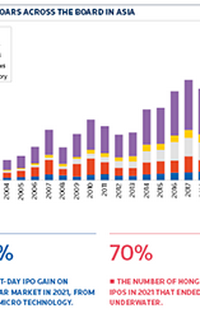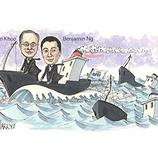
IFR Asia is pleased to announce the winners of the 2021 Awards, recognising achievements in the Asia Pacific capital markets. Our congratulations to the winners, and a sincere thank you to all of those who took the time to submit nominations.
To see the list of winners and read the 2021 IFR Asia Awards supplement, click here.
The IFR Asia Awards Roll of Honour is available here.
To see the digital version of this report, please click here.
Due to the current circumstances, we will be unable to hold our traditional IFR Asia Awards Gala Dinner in Hong Kong this year. However, we are hoping to be able to hold a smaller event in Singapore later in the year, where we will present trophies and make certificates available for collection.
More details will be posted here in the coming months.
The global IFR awards will be announced here at approximately 12pm UK time.
In the meantime, if you have any questions, please email paul.holliday@lseg.com.























